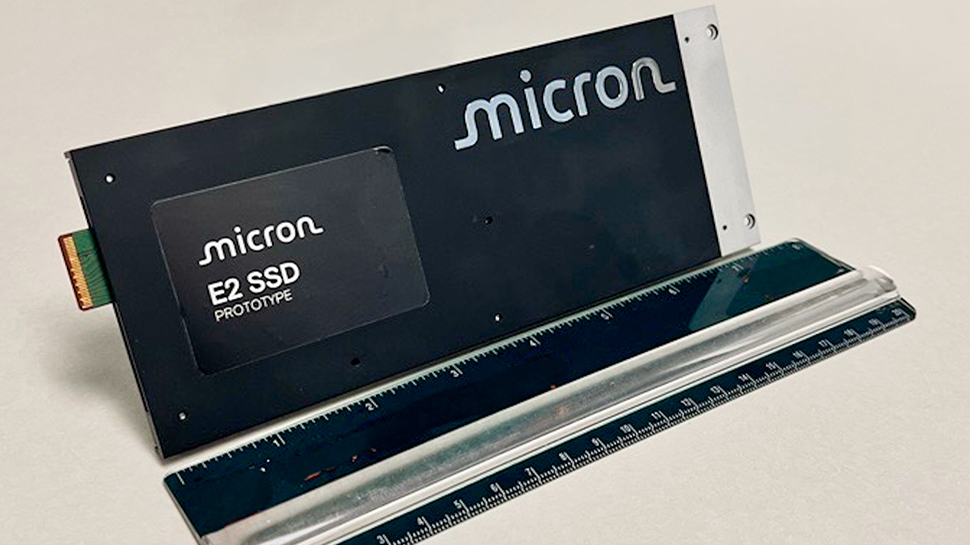This is what a 1000TB SSD could look like next year: New E2 Petabyte SSD could accelerate transition from hard drives
Micron and others are pushing toward a practical flash alternative

- E2 SSDs aim to balance storage performance capacity and efficiency
- New form factor fits rising demand for warm tier data storage
- High density flash could reduce reliance on hard drives long term
As workloads shift and cold data heats up under AI and analytics demands, the traditional split between high-speed SSDs and cost-effective hard drives is no longer serving every use case.
A new SSD form factor known as E2 is being developed to tackle the growing gap in enterprise data storage. Potentially delivering up to 1PB of QLC flash per drive, they could become the middle-ground option the industry needs.
StorageReview claims the E2 form factor is being designed with support from key players including Micron, Meta, and Pure Storage through the Storage Networking Industry Association and Open Compute Project.
Solid speeds, but not cutting-edge
E2 SSDs targets “warm” data - information that’s accessed often enough to burden hard drives but which doesn’t justify the cost of performance flash.
Physically, E2 SSDs measure 200mm x 76mm x 9.5mm. They use the same EDSFF connector found in E1 and E3 drives, but are optimized for high-capacity, dense deployments.
A standard 2U server could host up to 40 E2 drives, translating into 40PB of flash in a single chassis. StorageReview says these drives will connect over PCIe 6.0 using four lanes and may consume up to 80W per unit, although most are expected to draw far less.
Performance will reach 8-10MB/s per terabyte, or up to 10,000MB/s for a 1PB model. That’s faster than hard drives but not in the same class as top-end enterprise SSDs. E2’s priorities will instead be capacity, efficiency, and cost control.
Sign up to the TechRadar Pro newsletter to get all the top news, opinion, features and guidance your business needs to succeed!
Pure Storage showed off a 300TB E2 prototype in May 2025 featuring DRAM caches, capacitors for power loss protection, and a flash controller suited for this scale. While current servers aren't yet ready for this form factor, new systems are expected to follow.
It’s fair to say E2 won't replace hard drives overnight, but it does signal a shift. As the spec moves toward finalization this summer, vendors are already rethinking how large-scale flash can fit into modern infrastructure.
You might also like
- These are the fastest SSDs you can buy right now
- And these are the largest SSDs and hard drives on the market
- Here's why 100TB+ SSDs will play a huge role in ultra LLMs in the near future

Wayne Williams is a freelancer writing news for TechRadar Pro. He has been writing about computers, technology, and the web for 30 years. In that time he wrote for most of the UK’s PC magazines, and launched, edited and published a number of them too.
You must confirm your public display name before commenting
Please logout and then login again, you will then be prompted to enter your display name.